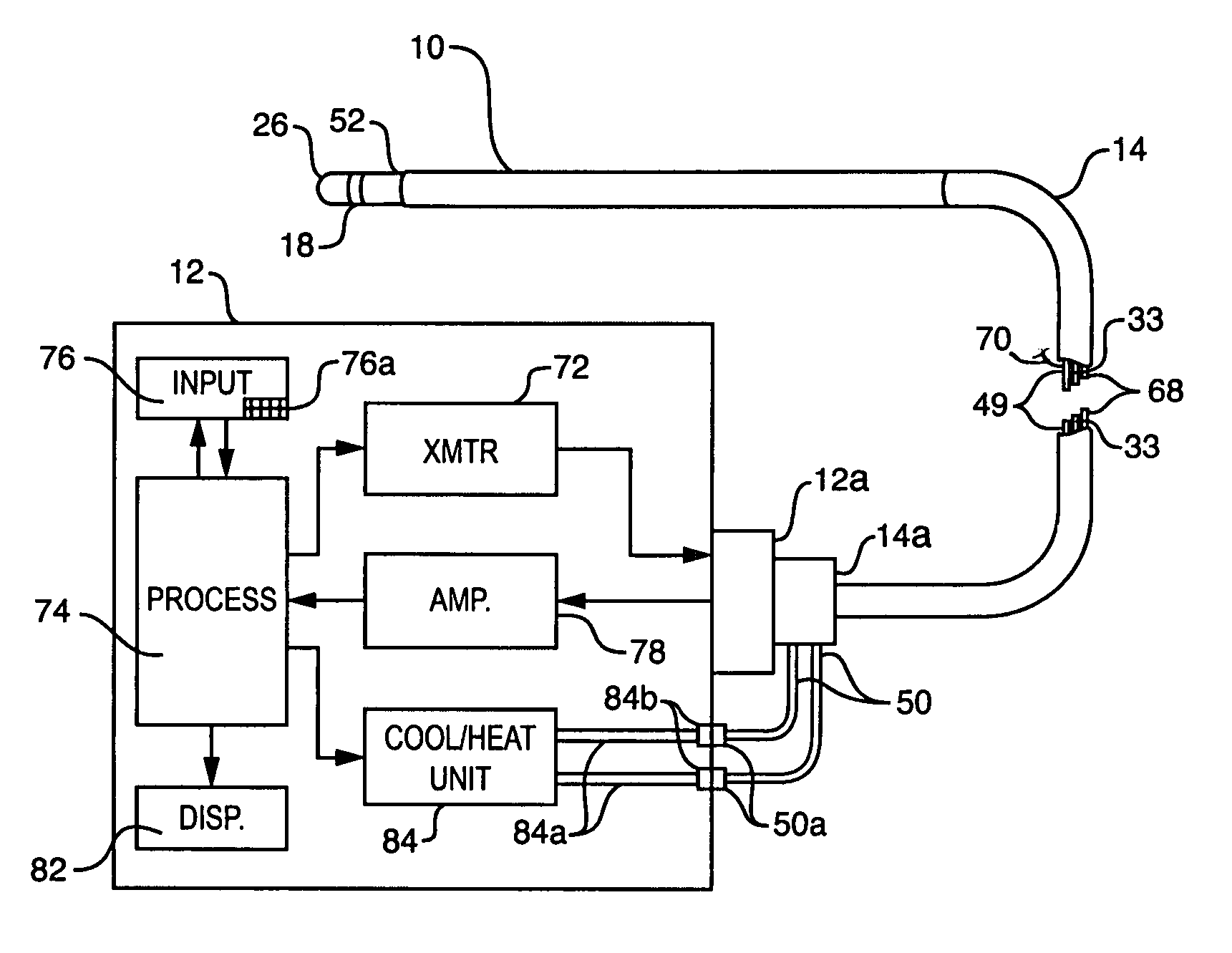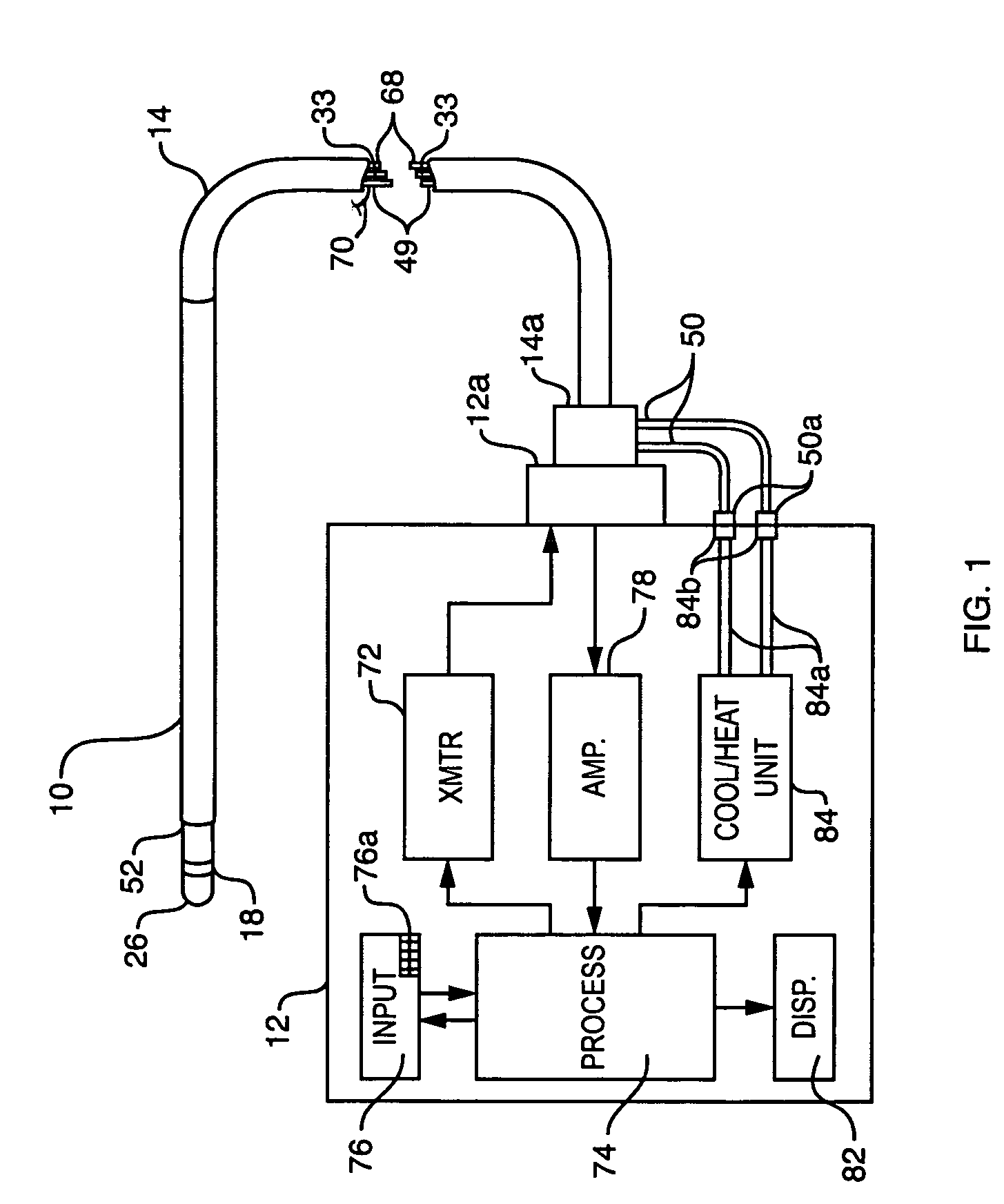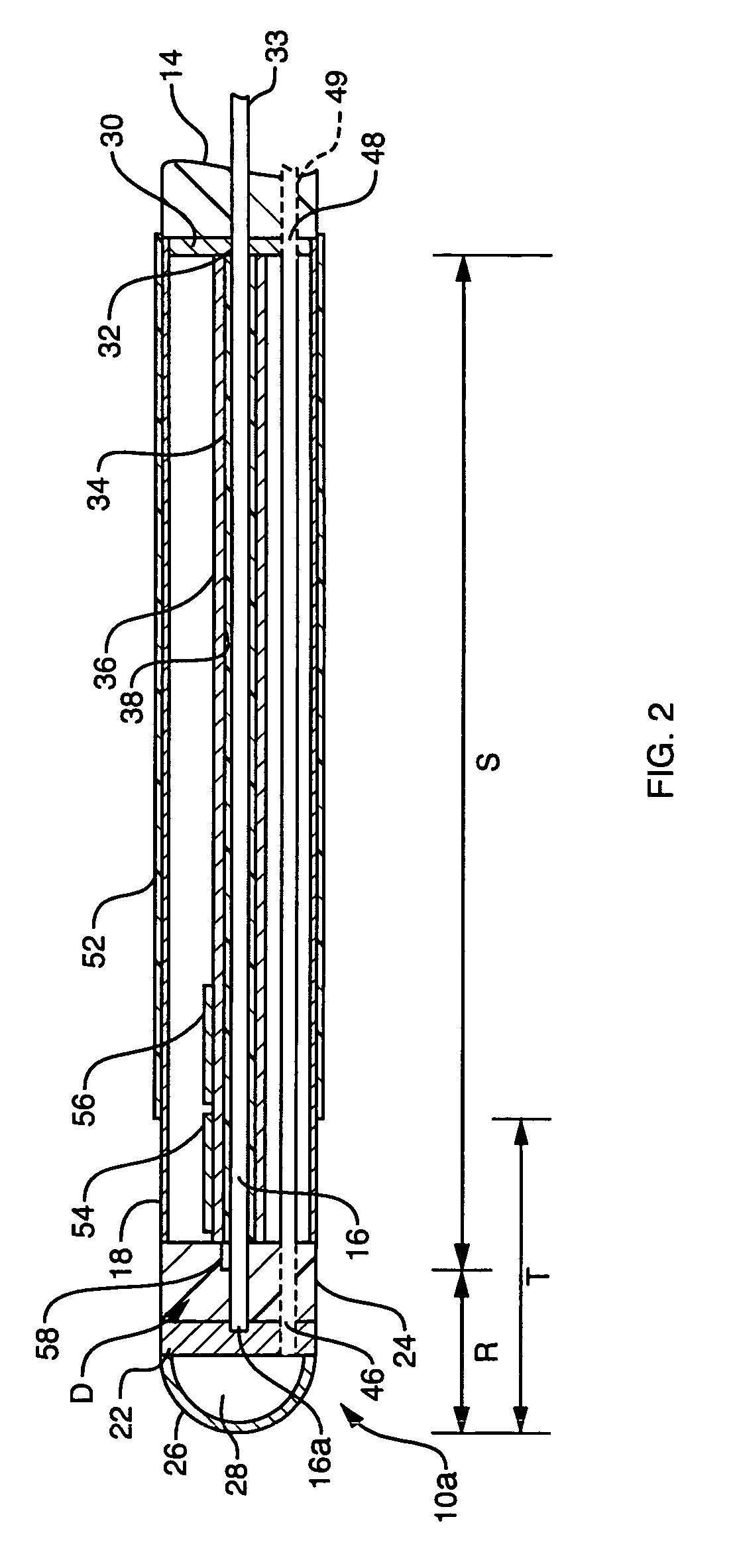Integrated heating/sensing catheter apparatus for minimally invasive applications
a technology of heating/sensing catheter and integrated antenna, which is applied in the field of medical catheter equipment, can solve the problems of introducing errors, spurious output signal fluctuations that are sometimes greater, and transmission lines located between the unknown temperature being detected and the dicke switch, so as to reduce the electrical distance between the antenna and the receiver, improve the signal-to-noise ratio and sensitivity, and improve the effect of sensitivity
- Summary
- Abstract
- Description
- Claims
- Application Information
AI Technical Summary
Benefits of technology
Problems solved by technology
Method used
Image
Examples
Embodiment Construction
[0026]Referring to FIG. 1 of the drawings, the apparatus comprises a minimally invasive flexible antenna catheter or probe 10 adapted to be threaded into a patient via a natural or incised passage in the patient's body, and an external control unit 12. The catheter is connected to unit 12 by a flexible cable 14 having an end connector 14a that connects to a mating connector 12a on unit 12. Typically, catheter 10 may be only 0.5 to 1.0 inch long and 0.08 to 0.10 inch in diameter.
[0027]Referring now to FIGS. 2 and 3, catheter 10 includes an inner conductor 16 and a coaxial tubular outer conductor 18. Conductor 16 is longer than conductor 18 and its front or leading end 16a is connected by solder, welding, etc. to the center of a conductive discoid toe plate 22 spaced in front of the outer conductor 18 which space is filled by a discoid dielectric spacer member 24. A hemispherical conductive shell 26 is mounted to the front face of toe plate 22. Together they form the conductive leadin...
PUM
 Login to View More
Login to View More Abstract
Description
Claims
Application Information
 Login to View More
Login to View More - R&D
- Intellectual Property
- Life Sciences
- Materials
- Tech Scout
- Unparalleled Data Quality
- Higher Quality Content
- 60% Fewer Hallucinations
Browse by: Latest US Patents, China's latest patents, Technical Efficacy Thesaurus, Application Domain, Technology Topic, Popular Technical Reports.
© 2025 PatSnap. All rights reserved.Legal|Privacy policy|Modern Slavery Act Transparency Statement|Sitemap|About US| Contact US: help@patsnap.com



